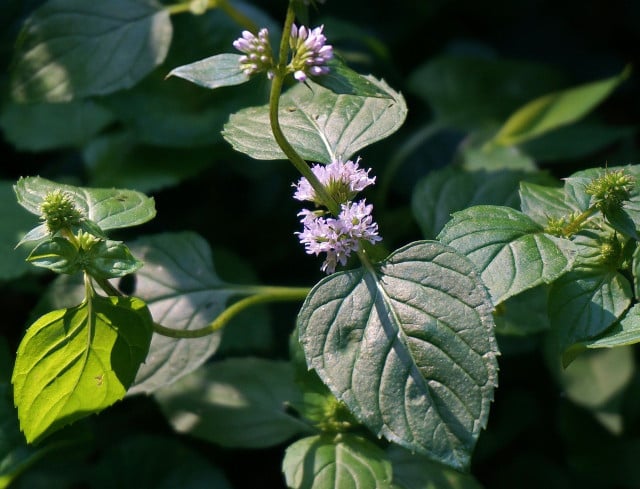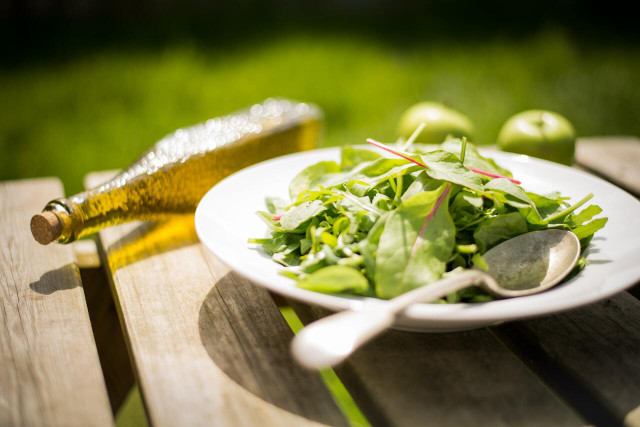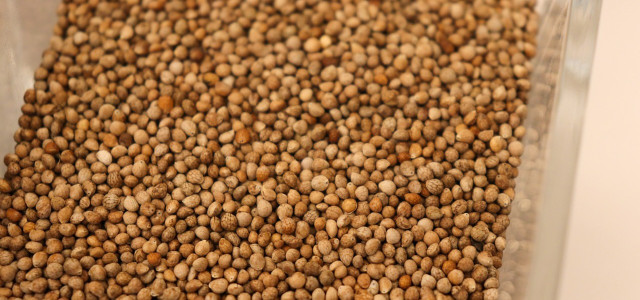Perilla oil is a staple in Korean cooking and is a favorite for dipping and drizzling on many dishes. Learn why you should cook with this tasty Korean seed oil.
Perilla oil has a unique taste, which can be described as slightly earthy or nutty, with a touch of licorice. Its texture is velvety smooth, making it very versatile and ideal for a variety of dishes. While perilla oil seems to only add a subtle undertone to Korean dishes, it’s obvious when this ingredient has been omitted.
Should you incorporate perilla oil into your cooking? We’ll take a look at how it’s made, some of the health benefits, and share a few ideas for how to incorporate this Korean seed oil into your dishes.
What is Perilla Oil Made from?



The seeds from the perilla plant are cold-pressed to extract the oil. The perilla plant is a member of the mint family and is commonly found in Korea, India, Japan, and southern China. Usually planted in the spring, the leaves can be eaten in the summer and even the by-product of the pressing process can be used to make fertilizer or animal feed — meaning very little is wasted. The seeds can be harvested in the fall and the perilla plant usually grows back each year, so there’s no need to buy new plants again.
The perilla plant can also grow in the US and is known by other names such as Chinese basil, wild coleus, or purple mint.
Is Perilla Oil Healthy?
Perilla oil contains incredibly high amounts of omega-3, and smaller amounts of omega-6, which are polyunsaturated fats. Due to this, perilla oil has numerous health benefits and can be used in treating conditions such as heart disease, asthma, allergies, and inflammatory conditions. It also has antimicrobial and anticancer properties.
The Korean seed oil also contains omega-9, which is a monounsaturated fat that may help improve blood sugar control and decrease inflammation. Overall, it makes a great, healthy choice of cooking oil.
Is Perilla Oil Good for Cooking?



There are two types of perilla oil — refined and unrefined. For the refined oil, the seeds are roasted before being pressed and it has a light, shiny brown color and stronger taste than the unrefined which is more golden in color. So the choice of oil depends on its desired use or personal taste.
Refined perilla oil can be used to sauté tofu or tempeh or for marinating vegetables. It is important not to use it when cooking on high heat as this can affect the taste. It can also be used in salad dressings such as vinaigrette, and other cold dishes such as pesto and dips. Unrefined perilla oil can be used to dress lighter dishes such as chickpea salads, pasta salads, a healthy spring salad, or homemade ramen broth. Both types of perilla oil would also make a great addition to soup recipes.
Read more:
- Does Cooking Oil Go Bad? How to Make It Last
- Quick and Delicious Vegan Caesar Salad Recipe
- Can You Freeze Olive Oil? The Answer Might Surprise You
Important Information regarding Health-related Topics.
** Links to retailers marked with ** or underlined orange are partially partner links: If you buy here, you actively support Utopia.org, because we will receive a small part of the sales proceeds. More info.Do you like this post?








